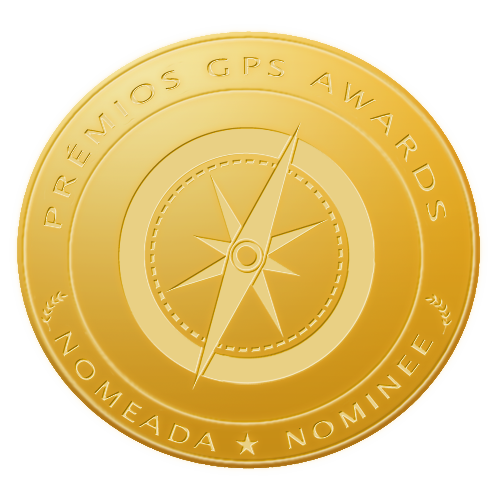
*Português* No século XIV, a foz do rio
Minho não era exactamente uma zona de lazer, procurada por amantes
de desportos náuticos e pesca desportiva. Do lado do rio, o reino
de Castela era uma ameaça persistente. Para além disso, piratas
pilhavam frequentemente a costa.
Não admira pois que, em 1388, D. João I tenha
ordenado a construção de um forte na ínsua em frente a Caminha, uma
localização estratégica de onde é possível controlar toda a foz do
rio. A construção que actualmente se ergue na ínsua não é a
original, mas sim a edificada por D. Afonso III, que foi
sucessivamente ampliada e reforçada em reinados seguintes.
Curiosamente, a ínsua de Caminha não teve apenas fins
militares.
Em 1392 um grupo de frades galegos e asturianos
obtiveram autorização papal para aí erguer um pequeno convento
Franciscano, que passou a conviver com a fortificação militar, numa
curiosa partilha de um espaço exíguo. Devem-se a estes frades
relatos de estranhos fenómenos, tidos por milagrosos. Pedras terão
sido vistas a levitar misteriosamente, por exemplo.
A fortificação, bem como parte das edificações
internas, incluindo o mosteiro, ainda existe actualmente e é
facilmente visível da costa. Se pedida com antecedência, pode ser
facilmente obtida autorização para visitar o seu interior, sendo
para tal emprestada a chave da entrada ou mesmo disponibilizado um
guia. Os contactos da Capitania são: tel: 258719070, fax:
2588719089. Note, no entanto, que a cache está localizada no
exterior da fortificação.
Para chegar até à cache terá que alcançar a ínsua
por barco. Na praia de Caminha (Pinhal do Camarido), próximo do
café-restaurante Ínsua (N 41 52,039 W 8 51,596), existe um pontão
de onde partem várias lanchas que efectuam o transporte regular de
turistas e pescadores desportivos até à ínsua, desde que as
condições meteorológicas o permitam. O custo da viagem de ida e
volta é de € 5 por pessoa (grátis para crianças). A viagem
demora cerca de 10 minutos e é perfeitamente segura. Uma vez
chegado à ínsua, resta combinar com o dono da lancha a hora de
regresso (recomendamos pelo menos uma hora de estadia), sacar do
GPS e iniciar a procura da cache. No final, ainda deverá ter tempo
para visitar o restante da ilha. E, já agora, fique atento, não vão
os piratas atacar de surpresa! Se não quiser ir de barco, poderá
optar por esperar que se forme a língua de areia que,
periodicamente, liga a ilha à praia e simplesmente atravessar a pé.
Este estranho fenómeno ocorre duas vezes por século, sendo o
primeiro relato de 1575. A última vez foi em 2003...
*English* In the 14th century, the estuary
of the Minho river was not exactly a leisure area, demanded by
lovers of nautical sports and fishing. On the other margin, the
kingdom of Castela was a persistent threat. In addition, pirates
frequently looted the coast.
It is therefore no wonder that, in 1388, king João
I ordered the construction of a fort on the small island located in
front of Caminha, a strategic location that controls the entire
estuary. The construction that nowadays exists is not the original.
It was built by king Afonso III and was successively enlarged e
reinforced by other kings. Interestingly, the island was not only
used for military purposes.
In 1392 a small group of friars from Galicia and
Asturias obtained permission from the pope to build there a small
Franciscan convent, which shared the island with the fort. These
friars left reports of strange phenomena occurring in the island,
taken as miracles. Rocks were seen levitating mysteriously, for
instance.
The fort, as well as part of the internal
edifications, including the convent, still exist and is easily
visible from the shore. Permission to visit the interior may be
obtained from the port authority (tel: 258719070, fax: 2588719089).
However, notice that the cache is located outside the fort.
In order to get to the cache you will have to take
a boat. At the beach of Caminha, next to the caffe-restaurant Ínsua
(N 41 52,039 W 8 51,596), there is a pier with several boats that
take regularly tourists or sports fishermen to the island, as long
as the weather conditions allow it. The trip costs € 5 per
person (children go for free). It takes about 10 minutes and is
perfectly safe. Once you get to the island, you just have to
arrange with the boat owner the return time (we recommend at least
a one hour stay), take out the GPS and start looking for the cache.
And, by the way, pay attention just in case the pirates decide to
attack by surprise! If you don’t want to take a boat, you may
choose to wait for the formation of a sand strip that periodically
connects the island to the beach and just cross on foot. This
strange phenomenon occurs about twice in a century. The first
report dates from 1575. The last time was in 2003...
